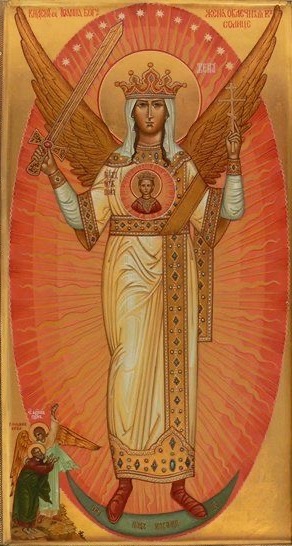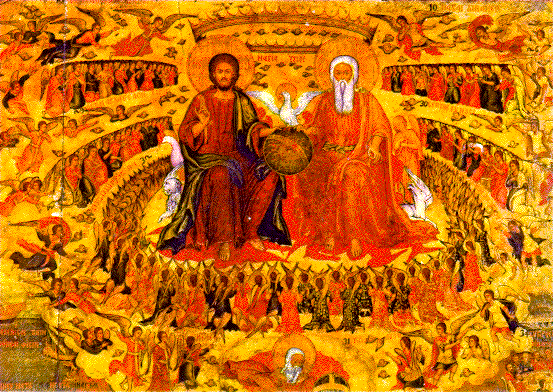Sophia
The gnostic philosophy is summed up in the myth of Sophia. This summary is from Samael Aun Weor’s book The Secret Doctrine of Anahuac and elaborated on in his work The Pistis Sophia Unveiled.
The Pistis Sophia is an apocryphal scripture and a tremendous esoteric work that takes place after Jesus’ resurrection, when He returns to teach His disciples of everything that happened after the resurrection.
Sophia is part of the story as an embodiment of a principle of innocence, but also power and wisdom. Sophia is the divine spark within, our essence, that has fallen from a place of light (the Absolute), into matter and duality. This may be familiar on some level, as it is a universal story of fall and redemption, the soul’s journey from matter to spirit.
The Seven Parts of the Gnostic Myth of Sophia
Supreme Divinity
The Gnostic Supreme Divinity can be characterized as Agnostos Theos, the Absolute Abstract Space, the Ignored or Unknowable God, the One Reality from which the Elohim emanate at the dawn of any universal creation. [ ]
What the Gnostics of all times have rejected, is not the unknown God, One and always present in Nature, or Nature in abscondito, but the God of the orthodox dogma, the horrific vengeful deity of the Law of Talion. The Absolute Abstract Space, the Unknowable God, is neither a limitless void nor a conditioned fullness, but both things in unison.
The Gnostic esotericist understands that revelation comes from divine beings, from manifested lives, but never from the One Life not Manifestable. The Unknowable Seity is the Absolute Abstract Space, the Rootless Root of all that has been, is, or shall be.
-Samael Aun Weor, Secret Doctrine of Anahuac
The Gnostics call God the Agnostos Theos, the unknowable God. This supreme divinity is Unmanifested Light, the Void, the Absolute. Everything is within the Absolute, but it is the unknowable mystery, except for the one that is an inhabitant of the Absolute, a paramatasaya.
Emanation and the Pleromatic Fall
The Divine World, the glorious domain of the Pleroma, came out directly from the Negative Light, the Negative Existence. Finally the Nous, Spirit or Pneuma, contains in itself infinite possibilities that can develop during manifestation.
The multiplicity or the fall did occur between the extraordinary limits of “to be or not to be” of Philosophy. The Gnostic myth of the fall of Sophia (divine wisdom), solemnly allegorizes this terrible disruption in the bosom of the Pleroma. [ ]
Desire, fornication, to want to stand out as ego, brings about disaster and disorder; it produces an adulterated work that is left outside the divine realm, even though the Essence, the Buddhata, the psychic material of the human creature, remains trapped in such a work. The impulse towards the Unity of Life, free in its motion, can become diverted towards the ‘I,’ and forge a whole world of bitterness in the separation. The fall of the degenerate human being is the basis of the Theology of all ancient nations.
According to Philolaus, the Pythagorean (fifth century BC), ancient philosophers used to say that the psychic material, the Essence, was buried in the ‘I,’ like a tomb, as punishment for some sin.
Plato testifies to this (that such was the Orphic Doctrine) and he himself professed it. Inordinate desire, disruption in the regime of emanation, leads to failure. To want to distinguish ourselves as ego always sparks off disorder and the fall of any angelic rebellion.
-Samael Aun Weor, Secret Doctrine of Anahuac
Pleroma means completely perfect. Creation, which is manifestation and therefore imperfection, unfolded from the the perfect unmanifest. In Kabbalah it is said that God wanted to become cognizant of his own happiness, so he unfolded into creation as a mirror to know himself.
Pistis Sophia is a part of the Absolute who becomes fascinated by the false light of creation and falls, becoming lost and trapped within matter. Sophia is often depicted with characteristics of lost innocence, such as a young child lost in a harsh world, or even a young women violated and trapped. It is important to understand that Sophia is an emanation of the Christ force, she is part of the cosmic drama of his journey into creation to fulfill his mission of redemption.
The Demiurge Architect
In the word Elohim, we find a transcendental key that invites reflection. Certainly, Elohim is translated as “God” in the various authorized and revised versions of the Bible.
Not only from the esoteric point of view, but also linguistically, it is an incontrovertible fact that the term Elohim is a feminine noun with a plural masculine ending. The correct translation of the noun Elohim in its strict sense is Goddesses and Gods. And the Spirit of the Male and Female Principles was hovering over the surface of what was shapeless, and creation took place. [ ] The deviation from the Creator Demiurge is the antithesis, is what is fatal, is the inclination to egoism, the real origin of so much bitterness.
-Samael Aun Weor, Secret Doctrine of Anahuac
The demiurge is the totality of the gods and goddesses that build and sustain creation. The demiurge is in charge of all the laws and principles of creation. The demiurge is considered a lesser God than the Supreme Divinity beyond all form and laws however it is still divine. That is why the Old Testament God has characteristics of jealousy, wrath, and vengeance, because his religion is of strictly and exclusively obeying the laws of creation. Only with the Christ, the Savior who is an inhabitant of the Absolute, can we be liberated from the world of the demiurge.
Pneuma in the World
To contemplate oneself as a moment in totality is to know oneself to be infinite, and to reject with all the might of ones own Being the sickening egoism of separateness. Two psychological states open before a defined Gnostic:
1. That of the Being, which is transparent, crystal-clear, impersonal, real and true. 2. That of the ‘I,’ which is a collective of psychic aggregates that personify defects, whose only reason to exist is ignorance. Clearly, both in essence and in accident, Gnosis and Grace are identifiable phenomenologically. Self-gnosis, the Inner Self-realization of the Being, would be more than impossible without divine grace, without the extraordinary help of the sacred Breath.
-Samael Aun Weor, Secret Doctrine of Anahuac
Pneuma means spirit, and also breath. The pneuma in the world is the Essence inside each one of us, and inside every living thing. Our Essence is that Sophia that wants to return to the Absolute, but is distracted and conditioned into matter. Distraction means “to pull in different directions”, and Sophia, our divine Essence is pulled and drawn apart into materialism and has forgotten her birthright of unity.
Duality
Duality is the nature of life, of matter and creation. All things are light and dark, good and evil, yes and no, black and white etc. The consciousness sleeps profoundly within materialism and duality. Therefore the goal of the sincere spiritual aspirant is to go beyond duality, the mind, and all of relatively.
The Savior
The Salvador Salvandus, the savior, is the force that helps us. Christ, as a cosmic force, an inhabitant of the Absolute, descends into creation to die and be resurrected, so that the light trapped within matter can return, but with the knowledge gained from the experience.
The Return
The return to the Absolute is the purpose of the Gnostic esoteric work. To liberate Sophia with the help and grace of, and communion with, the Christ. The Christ goes through his process of ultimate sacrifice so that we may follow him and bring more love and light into this world. The world is within the Absolute, so to “return” is not an escape to another place, but an incarnation of divine virtues in this world, and an offering of perfected values to bring into the bosom of the Unknowable Divinity.
Listen to a talk on the Gnostic Philosophy from Gnostic Waves Radio


